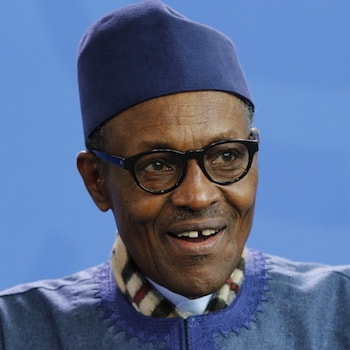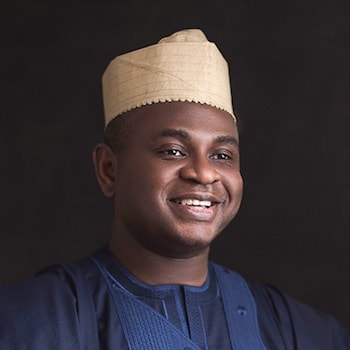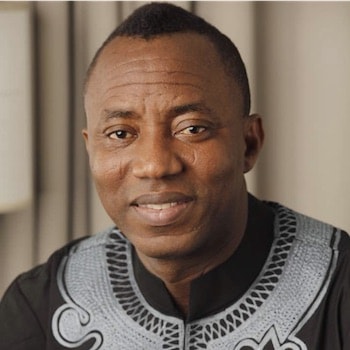Dis na di Part three for BBC series wey wan put Nigerian Presidential candidates facts or fire.
Some voters for Nigeria presidential election fit make dia choice based on wetin candidates don tok.
Dis fact checking project na to shift di election tok-tok comot from wetin party politics dey do to di policy mata for Nigeria.
But how pipo go take know say wetin di candidates dey tok na true?
Make we check am.

Nigeria still be kontri wey get high poverty level and big gap between di rich and poor. E be like Atiku dey tok say di levels fit neva change ova di last four years or e even don worst sef.
Data wey dey ground say wetin e dey tok fit dey correct.
Di whole Nigerian economy wen dem measure am for gross domestic product (GDP) still dey recover from recession afta di price of oil fall yakata for 2016.
Between 2014 and 2017, di average standard of living bin drop from US$3,222 per pesin to US$1,968 per pesin according to wetin World Bank calculate.
As dat one dey happun, di gap between di richest and di poorest Nigerians don dey increase fast-fast.
Aliko Dangote, wey dey stay Lagos, na Africa richest man. Forbes tok say im wealth fit reach like $10.5 billion.
E reach half of di kontri pipo wey dey live below wetin di international community say na di poverty line wey be US$1.90 (133.5 naira) per day. Four years ago, 85 million Nigerians bin dey poor, and dis number just dey climb up year by year. For 2016, 90 million be di number of poor pipo and for 2017, 94 million. Last year, World Bank tok say e fit pass 97 million pipo wey dey live for inside poverty.
Poverty wey tie wrapper dey increase reach six pipo every minute or about 3.2 million everi year. World Poverty Clock predict say 120 million Nigerians go dey live for poverty by 2030.
Di mata dey worse for northern Nigeria than for di southern states. Between 2004 and 2013, di number of poor pipo for di south reduce by about 6 million while for di north dem increase by almost 7 million.
For both di North East and North West regions, poverty reduction don dey hang and still dey high - 47.6% and 59% for di two regions.
Boko Haram na part of di reason for di poverty for northern region but na also goment fault, because of lack of economic development.

Presido Buhari no dey correct.
Di federal goment bin true-true start for di road to invest heavily for agriculture for dia Economic Recovery and Growth Plan 2017-2020
Di aim na to make Nigeria fit provide imself with di rice dem need by 2018 and for wheat production for 2020. But, dem no fit fulfill di rice promise by di end of last year and e no look like dem go meet di deadline for wheat.
Although rice production for Nigeria don dey increase small-small ova di last five years, and di numbers show say e go increase for 2019, di kontri still be one of di largest importers of rice for world.
For 2014, di average price per metric tonne for rice bin dey at US$425. Dat time, Nigeria bin dey import 2,600,000 metric tonnes of rice, wey cost reach $3,027,400. Dis na estimate of $3 million per day and we neva even add tax and tariff for di mata.
For 2018, di price for rice neva too change too much. Di current average consumer price for rice na around $421 per metric tonne. Even though Nigeria don reduce improtation, at di rate of 2,400,000 metric tonnes of rice wey dem import for 2018, Nigeria fit still don spend $2,766,027.40 or $2.7 million per day.
Di demand for rice dey increase as di population dey grow. Nigerians neva dump dem love for jollof.
Food na big wahala for Nigeria and di palava for di North East and Middle Belt don dey affect wetin crops dey produce and for family, dia way to make moni wey fit last.
According to Global Hunger Index (GHI), Nigeria na number 103 out of 119 kontris for di level of hunger and dem see am as "serious" wahala.
For March 2018, Presido Buhari launch di National Food Security Council, task team wey e dey lead, to face di mata of food insecurity for Nigeria.

According to di latest numbers, Nigeria pulblic debt don grow reach N7.55tn ($24.66b) for 2012 to N22.43tn ($73.21b) for 2018, dis na 196.9% increase.
To clear di debt finish, each Nigerian citizen go need to pay N118,046.33 ($385.33).
For 2017, di whole moni Nigeria make N2.71tn ($8.89b) and N1.62tn ($5.3b) enta to pay debt, wey dey estimated at 59,68%.
But e no mean say wetin Mogalu tok na true because different ways dey to pay public debts. No way dey to find out weda di N1.62tn ($5.3b) wey dem put to pay debt, weda all of am dey come from di moni wey di kontri make.
Di debt to GDP ratio na wetin dem dey use measure how e go easy for kontri to fit pay dia debt by say dem go compare how much di kontri dey owe to dia economic output. Low debt to GDP ratio mean say di kontri get enough economic output to pay dia debt. High debt to GDP ratio mean say e go hard for di kontri to pay dem debt if dem owe pass dem dey borrow.
For 2018, Nigeria debt ot GDP ratio bin dey for 19.72% wey be increase from 2013's 12.65%.
External debt na di moni wey di kontri dey owe outside kontris and joinbodi. Na about 29.49% of Nigria total debt and na The World Bank give Nigeria di majority of di moni.
For 2017, health and social welfare, agriculture and road transport bin dey among wetin goment use di external debt moni take service pass.
For di 2019 budget wey dem dey debate now, about 25.65% dey go debt servicing.

For 2012, di Federal Ministry of Housing calculate say di nation need 17 million houses based on wetin di numbers World Bank bring. Di goment bin get calculate say by 2014, di houses wey no go dey go reach 30-40 million houses.
But, World Bank see say di 2012 numbers no reach at all because Nigeria bin calculate per 6 pipo for one house, but international average na 4.6 pipo to one house. World Bank come tok say dat mean say di true houses wey no dey reach 30 million.
Since 2012, nobodi don do any deep survey of di number of houses wey Nigerians need so, di true number still be mystery.
Di 17 million houses na number wey pipo like to dey use but e no dey count population growth and investment wey no dey to build.
E dey hard to estimate close to di true number of homeless pipo for Nigeria as di kontri neva do population census since 2006 and di wahala wey dey happun don comot plenti Nigerians for dem house.
But, for 2017, di Bureau of Public Service Reform (BPSR) estimate say 108 million pipo for Nigeria dey homeless.
If you calculate with di 5 Nigerians per house and 108 million pipo wey no get house, di house wey di kontri need na 26 million houses
Di $3.6bn wey Sowore tok say im need go only reach for 360,000 houses

Na di agriculture sector dey pack pipo for Nigeria labour market pass. According to recent numbers for di NBS (Labour Force Statistics Vol. 2: Employment by Sector Report - Q3 of 2017), 48.2% of all workers dey work for agriculture, for one way or anoda, most of dem dey do am full time.
Trade, wey be di second highest sector wey dey employ but na only 14% of pipo e dey give work while oda work dey employ 7.9% while manufacturing dey 7% of pipo work.
Fela Durotoye dey right to tok say majority of Nigeians dey work for agriculture, but di percentage dey lower than wetin im tok.
Oga Durotoye no too miss road wen im say 35% of farmable land for di kontri dey in use.
Na only 37% of Nigeria farmable land (34,000,000 hectares) wey dey in use, according to numbers wey World Bank bring come for 2016. Di number neva change too much since 2011.
World Bank dey calculate say dem fit use 77.7% of Nigeria land for agriculture. Dat na about (708,000km2).
TALK MAKE WE ANSA Press am make we yarn
We wan make sure say we give correct info based on facts of wetin politicians dey claim by using data wey dey public.
We go chook eye for mata wey dey important for local community dem and wey main political parties dey tok.